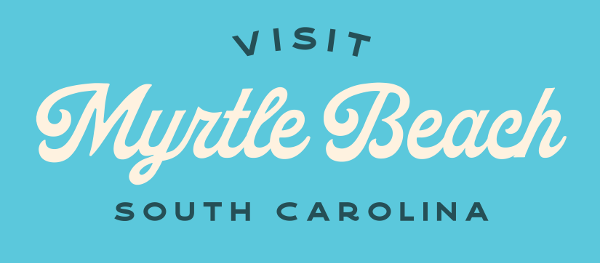Every year, Myrtle Beach draws some 20 million visitors with promises of endless soft sand, world-class golf, mouthwatering seafood, and just about everything under the sun — every pun intended — in the realm of entertainment and adventure.
And most of them come back, and then back again. A haven for every generation, it’s simple to find your happy place here, in any season. As far as we can tell, it only takes four steps.
Step one: Find your beach.
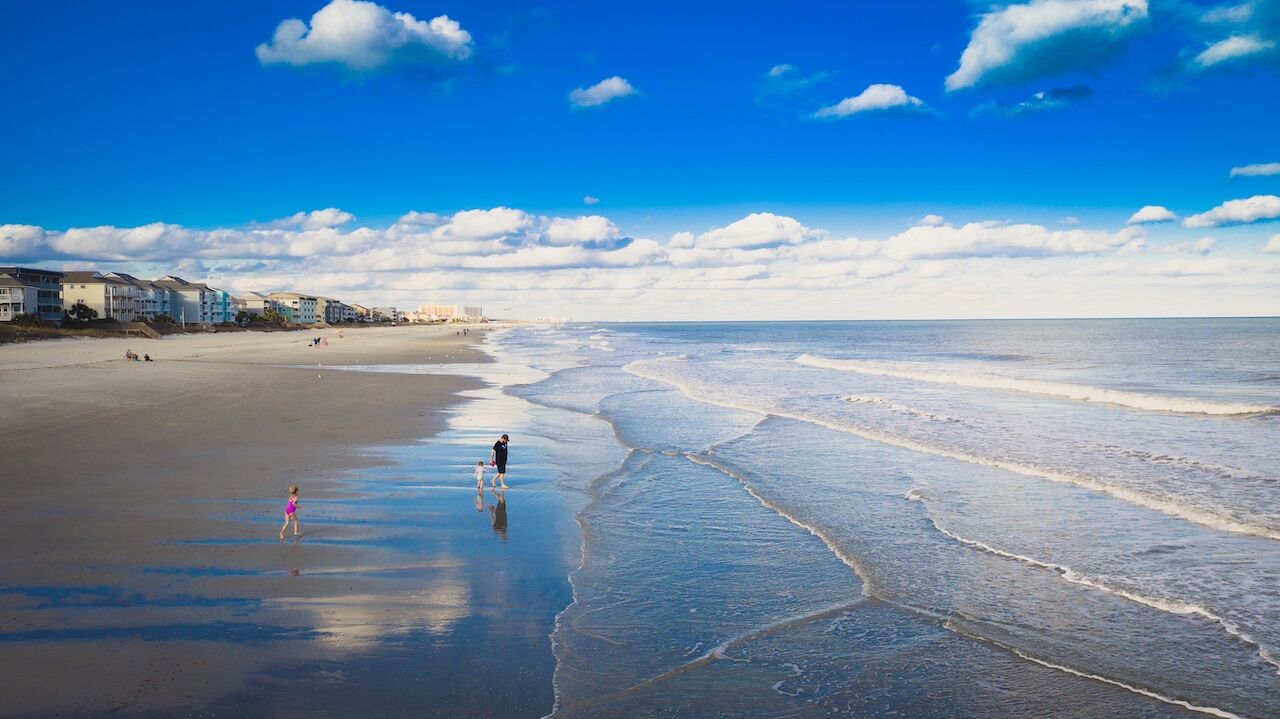
Photo: Visit Myrtle Beach
The Grand Strand — Myrtle Beach’s coast, essentially — runs for 60 miles of beautiful sand and surf. Stretching from Little River to Pawleys Island, each beach-y spot is different, so find whichever calls most strongly to you. Let’s break down the highlights:
- Surfside Beach is known throughout the region as the “family beach.” Smaller crowds, dozens of beach access points, seven public parks, and wide-open sand are just a few of the perks. (It also became the first official autism-friendly travel destination in the world in 2016.)
- The proximity of Garden City Beach to the inlet makes it a popular destination for fishing — among beginners and veterans alike — and watersports. As a bonus, The Pier at Garden City is free for those looking for a pleasant seaside stroll.
- North Myrtle Beach, a nine-mile stretch of sand, is the perfect blend of coastal retreat and entertainment. Go for a relaxed walk on the shore during the day; by night, get swept up in the sounds of beach music along Ocean Drive or by the award-winning restaurants and entertainment venues.
- Myrtle Beach is the “Heart of the Grand Strand.” Think nonstop energy from sunrise to sunset and beyond. The nearly 200-foot-high SkyWheel, located just feet from the sand, provides a bird’s-eye view of the beach in both directions, should you want to get your bearings (or simply enjoy the ocean breeze from elevation).
- A smaller community, Litchfield Beach is a good spot to post up if you’re traveling with nine-irons. You can expect more sea oats than sunbathers on the sand, yet it’s still in close proximity to all of the entertainment that is Myrtle Beach.
- Pawleys Island, 25 miles south of Myrtle Beach, is a tiny hamlet on a barrier island with several homes dating back to the late 18th century. The pace of life here is as slow and serene as it sounds.
Step Two: Find your community.
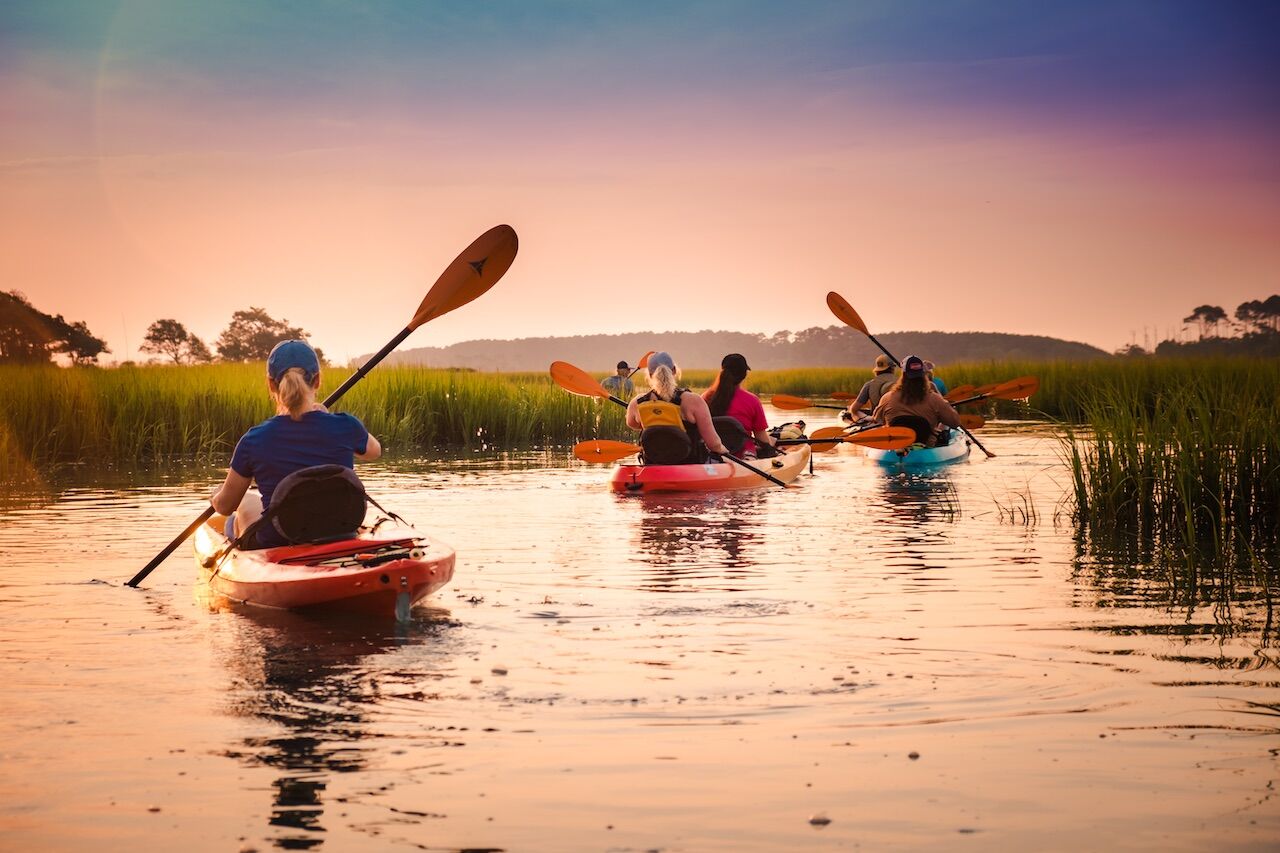
Photo: Visit Myrtle Beach
There are 14 unique communities set along these 60 miles of coastline. Families who have been coming to Myrtle Beach over the years usually return to the same place, passing along the tradition to the next generation. New visitors just need to find their niche. Beyond the highlights noted above, here are a few more spots that could be your perfect vacation home away from home:
- Located along the Waccamaw River, the historic homes and buildings of Conway create a charming backdrop to the scenic Conway Riverwalk. The annual Conway Riverfest highlights the area’s amenities with a weekend of music, food, and activities. The town is also home to Coastal Carolina University. Go Chants!
- Just south of the North Carolina border, Little River was a popular haunt for pirates in the 18th century. Each May, the town hosts the World Famous Blue Crab Festival, while in October the Little River ShrimpFest pays homage to another delicacy from the sea.
- We would be remiss if we didn’t mention the Loris Bog-Off Festival, in Loris. “Chicken bog” is a local delicacy that features chicken, sausage, rice, and a myriad of spices — grab a plate at this October event.
- Atlantic Beach was first established in the 1930s for Black families. Many of the area’s current residents are descendants of enslaved peoples from West Africa, known as the Gullah Geechee. Today, locals are actively working to preserve the rich history and culture of the town.
- Carolina Forest, a relatively new development, stays true to its name — nearly half of this residentially developed area preserves its natural setting. And yet, shopping opportunities abound.
- The “Seafood Capital of South Carolina,” Murrells Inlet was once the stomping grounds of Edward Teach, the infamous pirate known as Blackbeard. Try to imagine the Queen Anne’s Revenge anchored within sight of The Marshwalk, a 1,400-foot boardwalk winding along the marsh here.
Step three: Go beyond the beach.
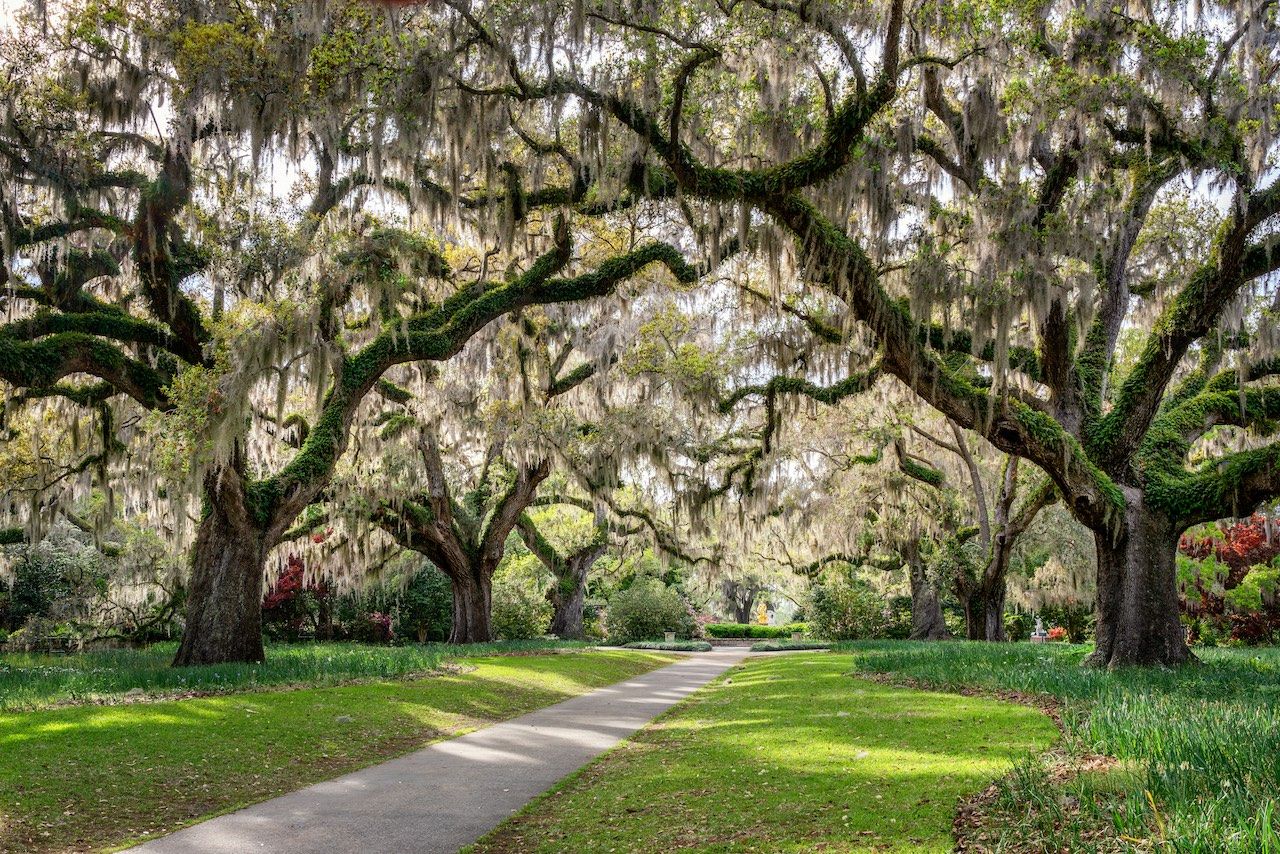
Photo: Craig Zerbe/Shutterstock
While most people visit Myrtle Beach for one-on-one time with the sea and sand, if that’s all you do then you’ll be missing out on one of the nation’s largest country music festivals, two state parks, an incredible botanical garden, awesome entertainment venues like the Alabama Theatre and The Carolina Opry, and celebrity-designed golf courses from the likes of Arnold Palmer, Greg Norman, and Robert Trent Jones. Bottom line: There’s so much here beyond the beach.
And that includes history. Huntington Beach State Park — think wide-open sand, quiet salt marshes, “seabreeze camping” — was once the coastal portion of a rice plantation. Early in the 20th century, Archer and Anna Huntington purchased the plantation and built their winter home on these oceanside grounds. Known as Atalaya Castle, the Moorish-style mansion is now open to visitors, right in the state park.
Just across what’s now Highway 17, the Huntingtons also created Brookgreen Gardens, in part to display Anna’s sculptures and other artistic works. Today, this botanical wonderland — one of the best public gardens in the county, bar none — still features a sculpture garden, alongside a wildlife preserve and Lowcountry zoo.
Watersports are also a very “Myrtle Beach” way to experience this coastal gem, and they can look like whatever you want. Kayak the maze of backwaters, blackwater rivers, and coastline; go jet-skiing along the shore; rent a pontoon boat and stock up that cooler; or charter a deep-sea fishing excursion or dolphin-watching tour. This is also one of the best angling spots on the East Coast, and you don’t need a license if you’re just fishing off-pier (or if you’re on a deep-sea charter, reeling in king mackerel).
Step four: Dive into the food scene.
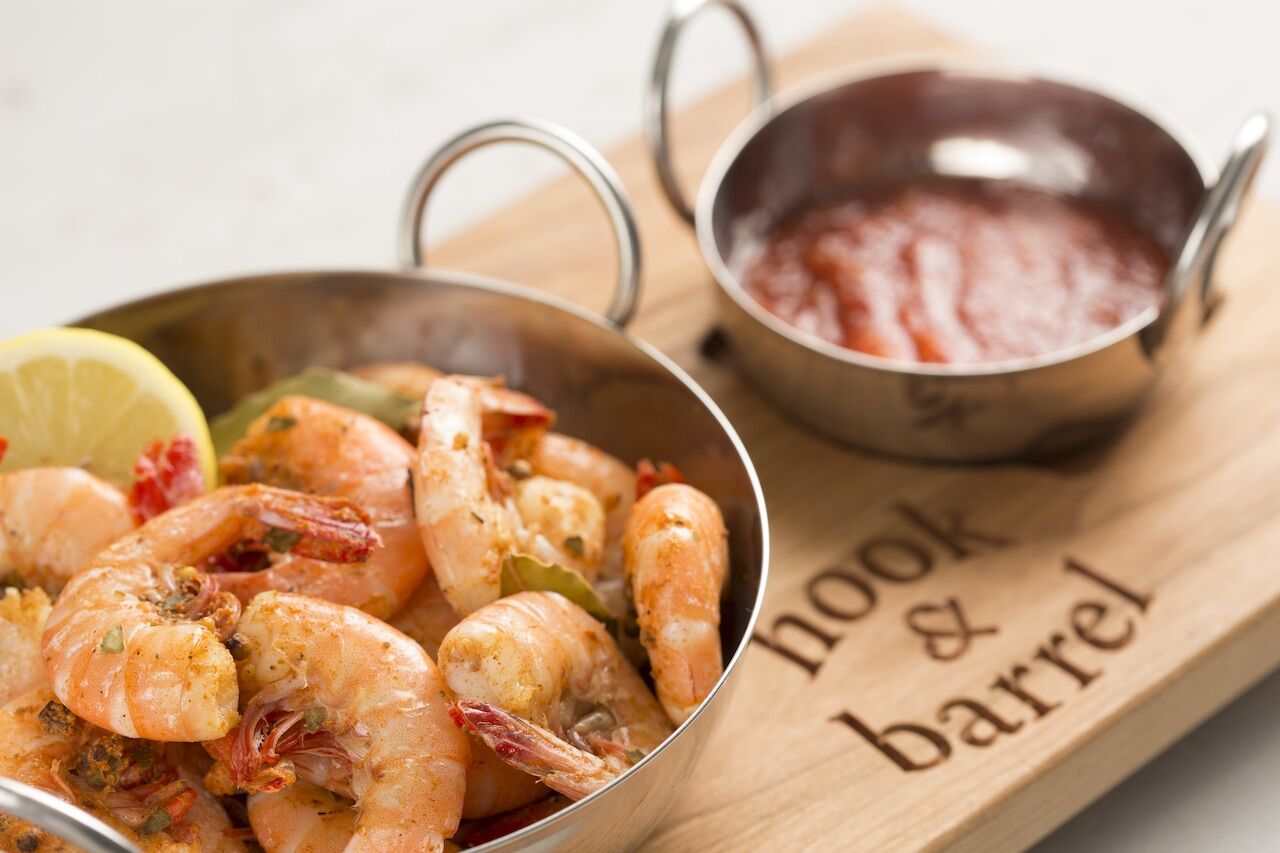
Photo: Visit Myrtle Beach
In Myrtle Beach, good restaurants are nearly as plentiful as seashells on the beach — pick one up, toss it, and you’ll land near a winner. The East Coast’s finest seafood fills most local menus, but if you need some suggestions, here are a few of favorites:
- Hot Fish Club. The original Hot Fish Club was founded in 1792. That’s not a typo! Sure, the original was located several miles away from the current iteration in Murrells Inlet, but its legacy lives on untouched.
- Lee’s Inlet Kitchen. Founded 73 years ago in Murrells Inlet, this is the only restaurant in the area that’s been owned and operated by the same family since its founding. It’s also consistently voted one of the best.
- Sea Captain’s House. What was originally built as a 1930s sea cottage has evolved into a must-have Myrtle Beach dining experience. With the menu sporting items like bacon-wrapped scallops and she-crab soup, this is one house you won’t mind visiting year after year.
- Hook & Barrel. Serving sustainably sourced seafood dishes and local produce, Hook & Barrel provides a one-of-a-kind dining experience in an eco-friendly setting. “One nibble and you’ll be hooked,” they say.
For the record, these steps can be accomplished in any order, so chow down, surf’s up, or settle in. Your happy place is just four steps away.
More like this
